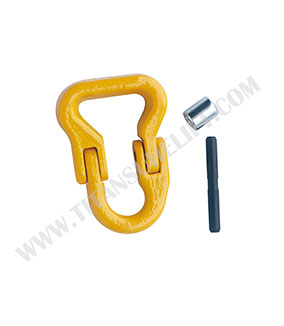The wire rope hoist is a small lifting tool that is widely used in various industries. The safety of wire rope electric hoist is very important. This article summarizes the safety technical points of wire rope electric hoist.
Ⅰ. What is the wire rope electric hoist?
The electric wire rope hoist (hereinafter referred to as the electric hoist) is a hoist that is composed of a motor, a reducer, a brake, etc., and finally the hoisting rope or the chain wheel is rolled up through the reel to drive the lifting hoist of the pick-up device. The electric hoist can be installed on the I-beam alone, or it can be installed on the electric or manual single-beam, double-beam, cantilever, gantry and other cranes.
According to whether the electric hoist has an operating mechanism and the type of operating mechanism, it is divided into: fixed electric hoist, single-beam trolley electric hoist and double-beam trolley electric hoist.
Electric hoists without operating mechanism and fixed use can be divided into two types: support type and suspension type according to their different installation methods.
The main components of the wire rope electric hoist are: traveling mechanism, motor, transmission mechanism, reel and wire rope.
Ⅱ. The safety risk of wire rope hoist
Electric hoist is a kind of lifting equipment. Due to factors such as operating factors, equipment factors and environmental factors, there are major risks such as lifting injuries, object strikes, and falling from heights.
1. The main operating factors are:
(1) Decoupling caused by improper lifting method, loose binding, scattered or swinging lifting objects to injure people;
(2) Violation of operating regulations, such as casualties and equipment damage caused by crooked and inclined cranes, overloaded lifting, people working in dangerous areas, etc., as well as overloading, over-hoisting, and derailment caused by operators not using safety devices in accordance with regulations , overturning and other accidents;
(3) Collisions caused by improper command and uncoordinated movements, etc.
2. Equipment factors mainly include:
(1) The failure of the lifting gear, such as the falling of heavy objects caused by damage to the lifting hook, wire rope and its fixed parts;
(2) Accidents caused by the failure of the control system of the lifting equipment or the failure of safety devices such as weight limiters, limiters, and brakes, such as the impact and pinch of heavy objects caused by the failure of the brake device;
(3) Accidents caused by insufficient component strength, such as accidents caused by collapse and fall caused by failure of electric hoist fixing parts;
(4) Electric shock accidents caused by damage to power cords and electrical appliances, poor insulation, and non-standard grounding;
(5) Derailment and derailment of the electric hoist due to rail gnawing, super wear or bending.
Ⅲ. Environmental factors mainly include:
(1) Collision and extrusion accidents caused by crowded and messy venues;
(2) Collision accidents caused by insufficient brightness and blocking the line of sight;
(3) Derailment, collapse, tipping and other equipment accidents caused by strong natural disasters such as lightning, gusts, tornadoes, typhoons, and earthquakes.







































